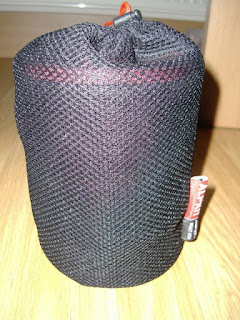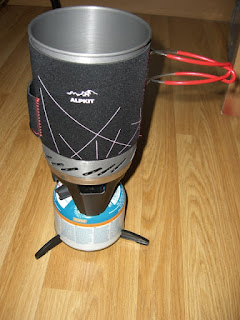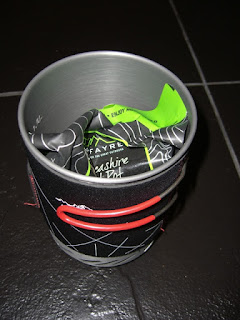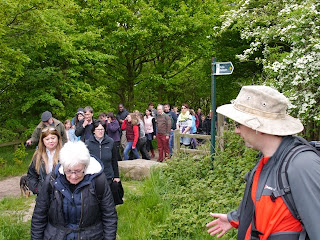If there's one thing I hate (who am I kidding? I hate everything) it's people who give out bad advice, particularly those perceived to be somewhat of an authority on the subject of which they speak; people who believe everything they read or hear then repeat it as gospel, or those who confuse their own opinions with fact. People who, basically, talk sh*t.
One of the reasons we set up this blog was to give a little back. We've relied heavily on other people's reviews over the years, be that of a product or a hiking route, or a place in general.
We made our own bad decisions along the way, and will no doubt continue to make bad decisions, but by telling others hopefully they can avoid making the same mistakes, and so we write our own reviews so that we can help others in return.
But a bad review (when I say bad, I don't mean negative, I mean biased, ill-informed, inaccurate, etc) is worse than no review at all. If you can't find any reviews on a product or place or anything at all, you are left with two choices- take a punt and go for it, or leave well alone. You'll evaluate things yourself.
If you read a bad review that leads you to believe something is good, particularly from someone who appears to know what they are talking about, this may well make up your mind for you, or at least heavily influence it.
Unfortunately, 2014 Outdoor Blogger of the Year, The Girl Outdoors, is full of such bad advice. I'm sure it is not intentional or out of spite; I believe it's fueled by ignorance and a quest for free gear.
Such gems include suggesting "cheap and cheerful pop-up tents" are suitable to "face the elements" advocating the use of disposable barbeques and worse- lighting open camp fires*, recommending tin cups and plates (didn't they stop making those half a century ago?) and favouring marshmallows over a first aid kit in her "camping ultimate packing checklist".
The reviews, if you can call them that, read like marketing scripts, and despite stating that the reviews are 100% objective, she also states that she
does accept corporate sponsorship and advertising, going on to list the brands that she has "worked" with which funnily enough often turn up in her product reviews.
I'd be hard-pushed to think of any product in any walk of life that I couldn't find a single negative point for (I've just got high standards), yet criticism is something that's distinctly lacking, as is any real detail or comparison to similar products, even within the same brand's own line.
Quantifying her stance, she states "I do get sent gear to test out by nice brands but I will only feature kit that I really like to use"; In other words, don't expect to read a negative review on her blog. Reassuring news to manufacturers considering sending her gear, I'm sure.
Much as an artist doesn't only use one brush, camping and hiking gear
varies wildly depending on where and when it is to be used, but there is
a lack of context to reviews and recommendations on The Girl Outdoors,
which could easily result in people choosing the wrong equipment for the wrong
task.
So, 100% objective reviews from someone who receives money from the brands she's reviewing and won't post reviews of products she doesn't like. Perhaps she should review the dictionary definition of "objective"?
Now it may seem I'm gunning for The Girl Outdoors, and that's genuinely not the case. She's obviously passionate about the outdoors, and that she tries to encourage others to enjoy it should be commended. That said, she is clearly ignorant of the basic do's-and-dont's, lacks any technical knowledge and writes reviews based on her own best interests rather than her readership's.
Had she not won Outdoor Blogger of the Year, I would dismiss it as just another load of old rubbish in the sea of tripe that is the internet. But that accolade gives an air of credibility to what otherwise may have been ignored, and so the bad advice gets lapped up, and no doubt passed on in turn, and people make bad decisions that could possibly have been otherwise prevented.
Her latest post- "Beginner's guide to camping", is quite clearly aimed at people who may not know much on the subject, yet once again she advocates lighting open fires, despite being previously lambasted for posting photographs of her wild camp in the Brecon Beacons where her and her companions had torched the ground with an open fire.
I'm loathe to post a link to The Girl Outdoors, but with any luck the back-links on Google will highlight this post and and stop people giving credence to her advice before the entire countryside goes up in flames.
The Girl Outdoors
**UPDATE**
After writing this post, and following comments between Sian and I on this blog (see below) and hers, to her credit she has updated her post to point out that not all campsites will allow disposable BBQ's or campfires.
While she is yet to make the position of campfires in the wild clear (i.e. not acceptable), at the same time the article no longer insinuates that it is OK to light one up. While this is a step in the right direction a clear statement on the legalities would be preferable to skirting round the matter, though I have to say fair-play to Sian for amending her blog and also for the polite and professional way she has conversed with me on the subject.
********
*Lighting fires on private land is illegal in the UK without the
landowners permission, and generally forbidden on
campsites. Given that wild camping is technically illegal anyway (apart from Scotland), lighting an open fire in the countryside is not only stupid, but a sure-fire way to get yourself kicked off the hill.
Many campsites don't allow disposable barbeques because they
scorch the ground and pose fire risks (not to mention the dangers of using them inside a tent), although some provide designated areas or paving
slabs upon which to use them, and you should be allowed to use them if elevated off the ground on a camping table or cook stand. Check with your intended campsite first if you are relying on a barbeque as your primary cooking source.




















































